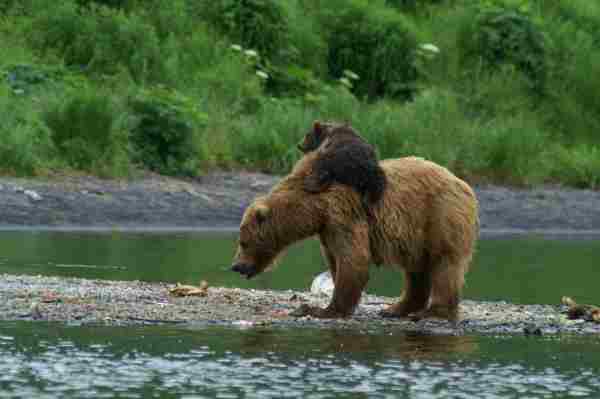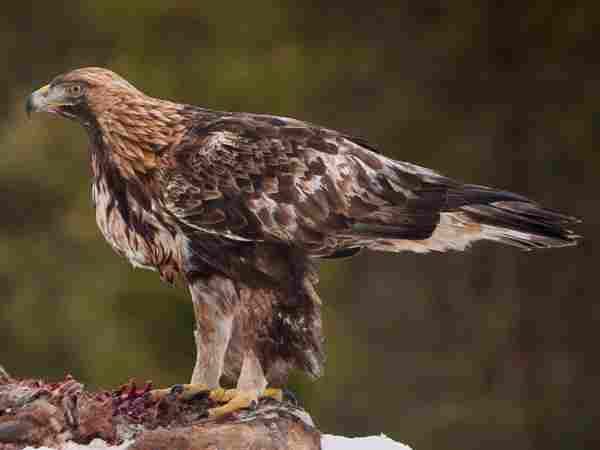Europe, renowned for its historical charm and diverse landscapes, holds within its borders a realm less celebrated yet equally captivating—the realm of dangerous animals. Beyond the iconic architecture and breathtaking scenery lies a hidden world where creatures of untamed power and primal instincts roam.
Table of Contents
From the frigid Arctic expanses to the lush Mediterranean shores, the continent harbors an array of predators and venomous creatures that have evolved to survive and thrive in their respective niches. While Dangerous Animals in Europe may not boast the same menagerie of lethal beasts as other continents, it presents a unique tapestry of perilous wildlife that demands our respect and caution.
Venturing into the wilds of Europe, one can encounter a mosaic of danger. From the elusive Iberian lynx with its penetrating gaze to the enigmatic wolverines ruling the Nordic forests, these creatures remind us that untamed nature still pulses within the modern world.
The slithering vipers and stealthy predators serve as a testament to the resilience and adaptability of life in the face of adversity. In this exploration of Europe’s wild side, we delve into the stories of these creatures, understanding their behaviors, their habitats, and the measures in place to ensure harmonious coexistence with the ever-intriguing and sometimes perilous inhabitants of this continent.
List of Dangerous Animals in Europe
Eurasian Brown Bear
European Wolf
Wild Boar
European Adder (Vipera berus)
European Viper (Vipera aspis)
European Wasp (Vespula spp.)
European Tarantula (Lycosa tarantula)
A. Portuguese Man o’ War (Physalia physalis)
European Sea Stingers (Jellyfish)
Eurasian Magpie
European Golden Eagle
Importance of Understanding Dangerous Animals:
Understanding dangerous animals in Europe goes beyond fascination; it’s a matter of safety and coexistence. Whether it’s a venomous snake hidden in the underbrush or a majestic but potentially unpredictable predator, knowledge empowers us to navigate our surroundings responsibly.
By comprehending their behavior, habitats, and triggers, we can minimize the risk of encounters and foster an environment where both humans and wildlife can thrive. This knowledge equips us with the tools to differentiate between real threats and perceived dangers, promoting a deeper appreciation for the complex web of life while ensuring our own well-being.
European Regions with Diverse Wildlife and Potential Risks:
Europe’s varied landscapes provide niches for an array of wildlife, some of which pose potential risks to human safety. From the untamed expanses of the Carpathian Mountains hosting bears and wolves, to the coastal habitats harboring seals and occasionally, formidable marine predators, each region holds its unique challenges.
The Mediterranean’s venomous snakes and the elusive lynxes of Iberia add further layers to this intricate tapestry. While the likelihood of encountering these creatures is relatively low, awareness of their presence and habits is essential for anyone venturing into the wild, ensuring both an enjoyable experience and a respectful distance from these fascinating but potentially hazardous inhabitants.
Balancing Conservation and Safety:
The delicate balance between conservation and safety is a pivotal consideration in managing dangerous animals in Europe. Conservation efforts strive to protect these creatures and their habitats, acknowledging their crucial roles in maintaining ecosystems. Yet, as human populations encroach upon wild areas, finding this equilibrium becomes imperative.
Effective measures, such as habitat preservation, public education, and responsible tourism practices, play a role in minimizing negative interactions. From establishing wildlife corridors to developing early warning systems, every step toward coexistence takes us closer to a future where the magnificence of Europe’s dangerous animals can be admired without compromising human safety.
Eurasian Brown Bear:

The Eurasian Brown Bear, an icon of Europe’s wilderness, commands both respect and awe. Roaming the vast woodlands of northern and eastern Europe, this formidable omnivore plays a vital role in maintaining ecosystem balance. Though elusive, its presence demands vigilance in bear-inhabited areas to prevent unexpected encounters. Understanding their behavior, including hibernation patterns and foraging habits, is crucial for ensuring peaceful coexistence.
European Wolf:

The haunting call of the European Wolf echoes through select regions, a testament to its enduring significance in European ecology. As apex predators, they regulate prey populations, fostering biodiversity. Yet, their reclusive nature diminishes direct human interactions. Efforts to reintroduce and protect wolf populations highlight the importance of preserving their habitats and promoting harmonious relationships between humans and nature.
Wild Boar:

The resilient Wild Boar, a forest dweller with a strong presence, exemplifies Europe’s untamed essence. Foraging omnivores, they adapt to various environments, often bringing them close to human settlements. While they contribute to ecosystem health by rooting and dispersing seeds, their growing numbers demand responsible management to prevent habitat damage and conflicts with humans.
European Adder (Vipera berus):

The European Adder, the continent’s sole venomous snake, maintains a discreet existence across diverse habitats. Their venomous bite, though rarely fatal, underscores the importance of awareness when venturing into their territories. Recognizing their distinctive markings and practicing caution mitigates risks and preserves the role these serpents play in maintaining pest populations.
European Viper (Vipera aspis):

The European Viper, or Asp Viper, commands attention with its striking appearance and potent venom. Inhabiting rocky terrains, it exemplifies Europe’s enchanting but potentially perilous fauna. Understanding their habitats and habits guides hikers and nature enthusiasts in regions where these vipers dwell, ensuring respectful cohabitation.
European Wasp (Vespula spp.):

European Wasps, integral to ecosystems as predators of insects, possess potent stingers for defense. Often attracted to human activities due to food sources, their presence necessitates mindful waste disposal and precautions against accidental stings, ensuring peaceful picnics and outdoor experiences.
European Tarantula (Lycosa tarantula):

The European Tarantula, a wolf spider species, navigates the landscapes of Europe’s Mediterranean regions. Though not as venomous as its distant relatives, understanding its non-aggressive nature and role in insect control dispels misconceptions, fostering an appreciation for its contributions to the ecosystem.
Portuguese Man o’ War (Physalia physalis):

Floating on ocean currents, the Portuguese Man o’ War represents an enigmatic danger. Often mistaken for jellyfish, this colonial organism delivers painful stings. Awareness of their presence and careful navigation of coastal waters are essential to enjoying Europe’s seas while respecting its potentially perilous inhabitants.
European Sea Stingers (Jellyfish):

European waters host various species of jellyfish, some armed with stinging cells. As climate changes influence their populations, understanding their lifecycles and habitats is crucial for safe aquatic enjoyment, guiding beachgoers and swimmers toward safer encounters.
Eurasian Magpie:

The Eurasian Magpie, with its striking black and white plumage, is both a charming and intelligent presence across Europe. Adept at adapting to urban environments, its behaviors reveal the fascinating interplay between intelligence and survival, offering insights into avian adaptability in changing landscapes.
European Golden Eagle:

The European Golden Eagle reigns as a majestic raptor, soaring over rugged terrains. Symbolizing wilderness, they are a testament to Europe’s untamed beauty. Efforts to safeguard their habitats and minimize human disturbances allow these regal birds to grace the skies, serving as a living connection between humanity and the wild.
Precautions and Safety Tips in Dealing with Dangerous Animals in Europe
When exploring Europe’s captivating landscapes and encountering its diverse wildlife, it’s essential to prioritize safety and respect for the local flora and fauna. Here are some precautions and safety tips to keep in mind:
- Research and Awareness: Before venturing into unfamiliar territories, research the specific dangerous animals that inhabit the region. Understanding their habits and habitats can help you avoid potential encounters.
- Stay on Trails: Stick to designated trails and paths when hiking or exploring natural areas. Straying off the path can increase the likelihood of stumbling upon dangerous animals’ habitats.
- Keep a Safe Distance: Maintain a respectful distance from wildlife. Use binoculars or a camera with a zoom lens to observe animals without disturbing them.
- Avoid Provocation: Do not approach, corner, or attempt to handle dangerous animals. Avoid provoking them, as they might perceive you as a threat and react defensively.
- Wear Appropriate Clothing: When exploring wooded or grassy areas, wear long pants, closed-toe shoes, and gloves to reduce the risk of bites or stings from insects and other small creatures.
- Be Cautious Near Water: When swimming in natural bodies of water, be cautious of aquatic animals like jellyfish or weever fish. Shuffle your feet along the sand in shallow waters to alert creatures of your presence.
- Use Insect Repellent: Apply insect repellent to deter insects and ticks, especially in forested areas. Check yourself for ticks after spending time outdoors.
- Secure Food and Waste: If camping or picnicking, store food securely to prevent attracting wildlife. Dispose of waste properly to avoid unintentionally luring animals to your location.
- Respect Nesting Sites: Be cautious around areas where animals might be nesting, such as ground-nesting birds or reptiles. Disturbing nests can lead to defensive behaviors.
- Travel in Groups: When exploring remote areas, it’s safer to travel in groups. This increases your presence and reduces the risk of surprising dangerous animals.
- Know First Aid: Familiarize yourself with basic first aid procedures for bites, stings, and other wildlife-related incidents. Carry a basic first aid kit when outdoors.
- Local Guidance: In regions known for specific dangerous animals, heed local advice and guidelines provided by authorities or guides.
- Respect Seasonal Patterns: Be aware of animal behavior patterns, such as mating or breeding seasons, and adjust your activities accordingly.
- Educational Programs: Participate in guided tours or educational programs that teach you about local wildlife and how to interact safely with them.
Conservation and Management of Europe’s Wildlife and Ecosystems
Preserving the rich tapestry of Europe’s wildlife and ecosystems requires diligent conservation and effective management strategies. The continent’s diverse habitats, home to a wide range of plant and animal species, face increasing challenges due to urbanization, habitat loss, climate change, and human activity. Conservation efforts strive to maintain biodiversity, restore degraded ecosystems, and ensure the survival of endangered species.
Effective management involves a combination of scientific research, policy development, and community engagement. Protected areas, such as national parks and nature reserves, play a crucial role in safeguarding vulnerable habitats and providing havens for wildlife. Sustainable practices in agriculture, forestry, and fisheries contribute to the preservation of ecosystems while meeting human needs.
Collaboration between governments, non-governmental organizations, local communities, and international bodies is essential for successful conservation. Public awareness campaigns and educational initiatives foster a sense of responsibility and inspire action. By recognizing the intrinsic value of Europe’s natural heritage and implementing thoughtful conservation measures, we can secure the beauty and resilience of these ecosystems for current and future generations.
Final Words
In conclusion, Europe’s intricate web of ecosystems and diverse wildlife is a testament to the beauty and complexity of the natural world. Through vigilant conservation and responsible management, we can harmonize our coexistence with the region’s dangerous animals and delicate environments. The preservation of these habitats not only ensures the survival of unique species but also maintains essential ecosystem services that benefit both nature and society.
By valuing and protecting Europe’s wildlife, we embrace our role as stewards of the environment and guardians of the intricate balance that sustains life on this remarkable continent. Through collective efforts, we have the power to safeguard the wonders of Europe’s natural heritage for generations to come.
Reference:
- https://golookexplore.com/dangerous-animals-in-europe/
- https://www.smithsonianmag.com/science-nature/the-top-ten-deadliest-animals-of-our-evolutionary-past-18257965/
- https://www.eurogroupforanimals.org/news/aap-animal-advocacy-and-protection-many-exotic-animals-kept-europe-carry-dangerous-diseases

Jeevan Kodiyan
An animal enthusiast with an interest in zoology, studying the behavior and activities of animals in the wild habitat. I work on research projects related to species conservation and endangered species protection. I also leverage zoology to become an educator, educating others about the importance of protecting our natural environment and the beauty of animals in their natural habitats.








